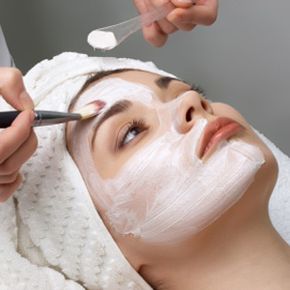For years, natural products found in the kitchen have been used to aid in skin care. The cabinets and refrigerator seem to be packed with healing agents, from cucumbers for your eyes to honey for your skin, and you probably know about most of them -- except, perhaps, the one that's lurking away in your milk jug: lactic acid. Part of the alpha hydroxy family, this key ingredient gives the term "milky complexion" a whole new meaning [source: Skincare News].
Derived from sour or fermented milk, lactic acid is a popular beauty aid for those seeking to improve their skin's texture and hydration level. If you need celebrity testimony on the matter, look no further than Cleopatra's beauty regimen. Even the former Egyptian queen, who was known for her beauty, was rumored to have bathed in sour milk to improve her skin [source: Bond].
Advertisement
At this point, you might be tempted to jump in the bath with a glass of milk as well, but you'll soon learn that lactic acid doesn't necessarily work that way (if only it were that easy). However, there are a number of useful treatments and products that contain lactic acid -- from peels to lotions to creams -- which this article will explore.
As with anything, there are a few drawbacks to lactic acid. Even though it is milder than some other compounds, it can still be irritating, particularly on damaged or allergy-prone skin. And no matter what lactic acid product you use, increased sun sensitivity is often an issue [source: Drugs.com]. It's important to limit your time in the sun and use sunscreen if you use a product that contains lactic acid. For the possibility of smoother skin, though, the extra precaution might be worth it.
Read on to find out why lactic acid is fit for a queen.
Advertisement

